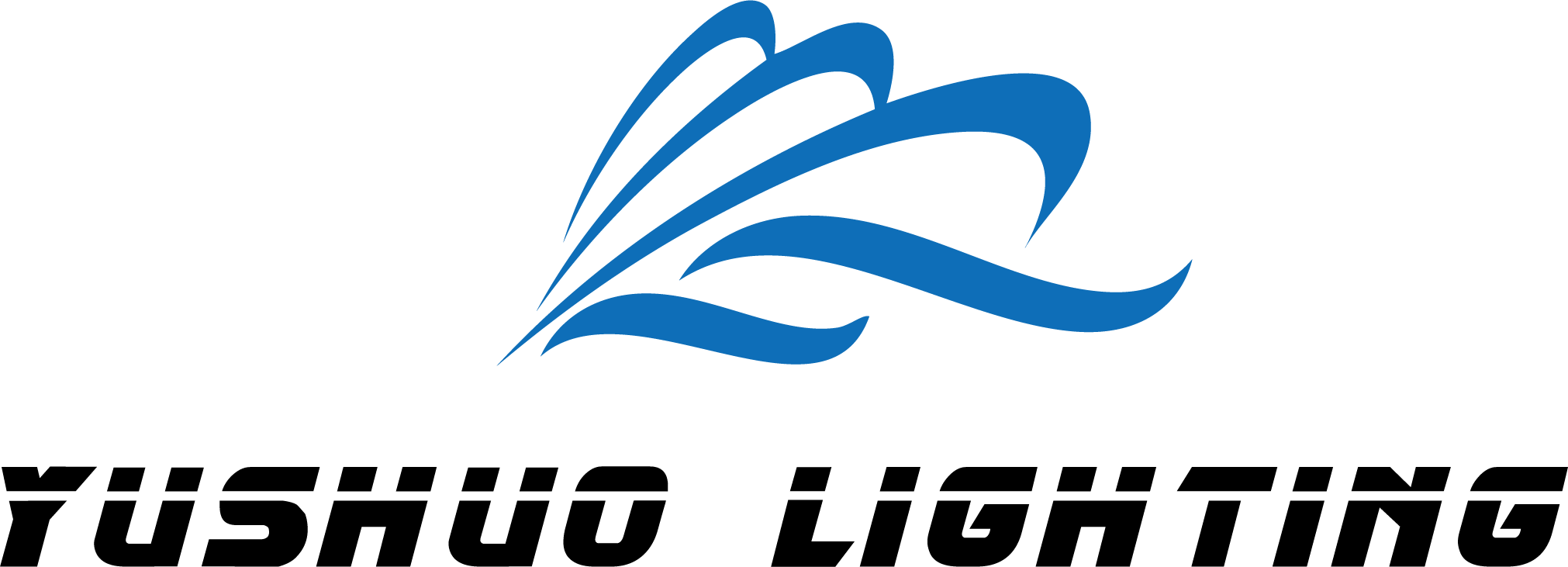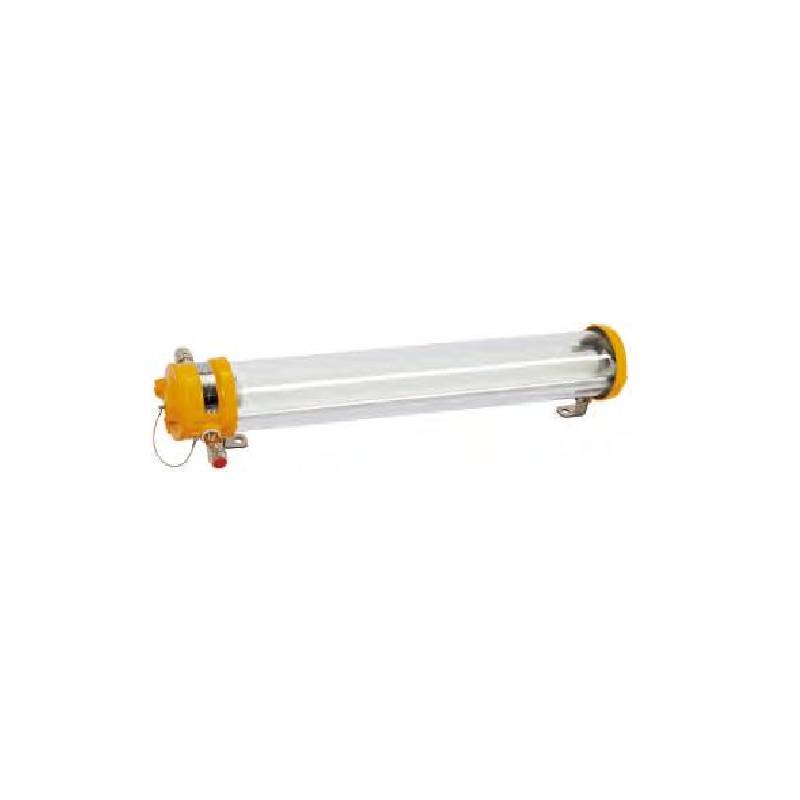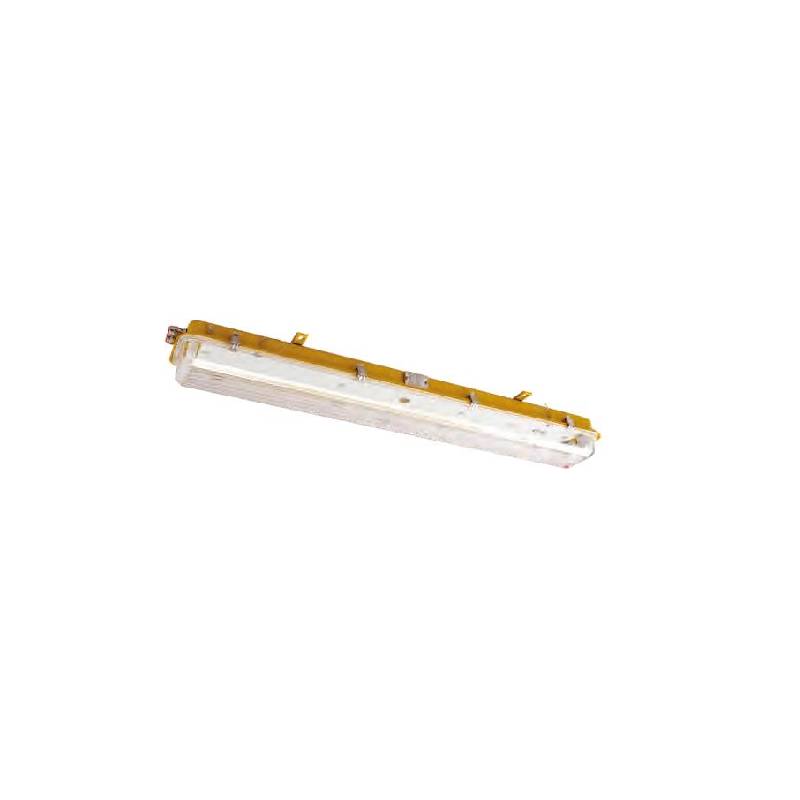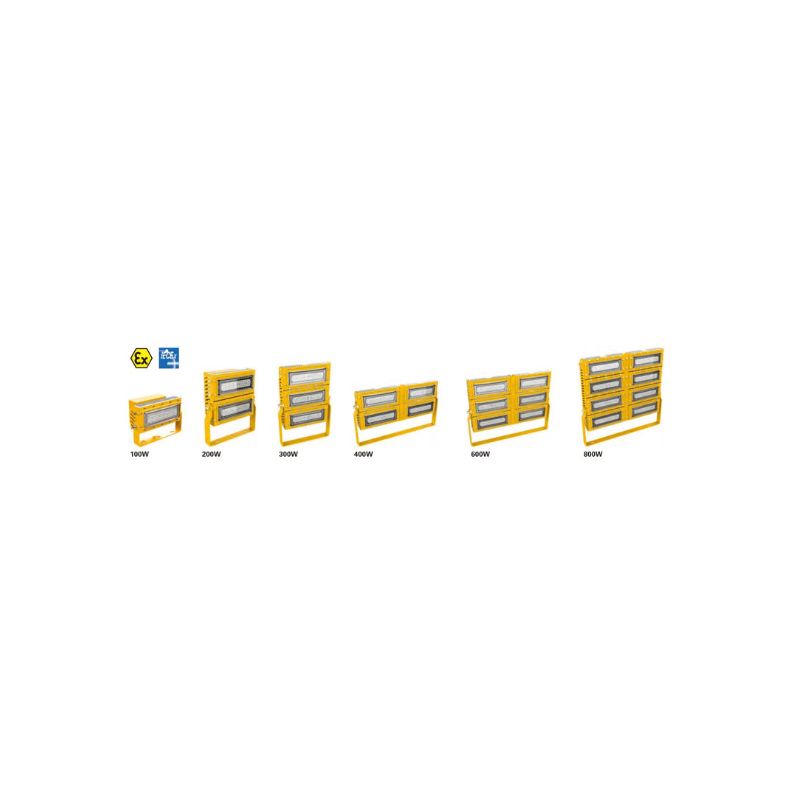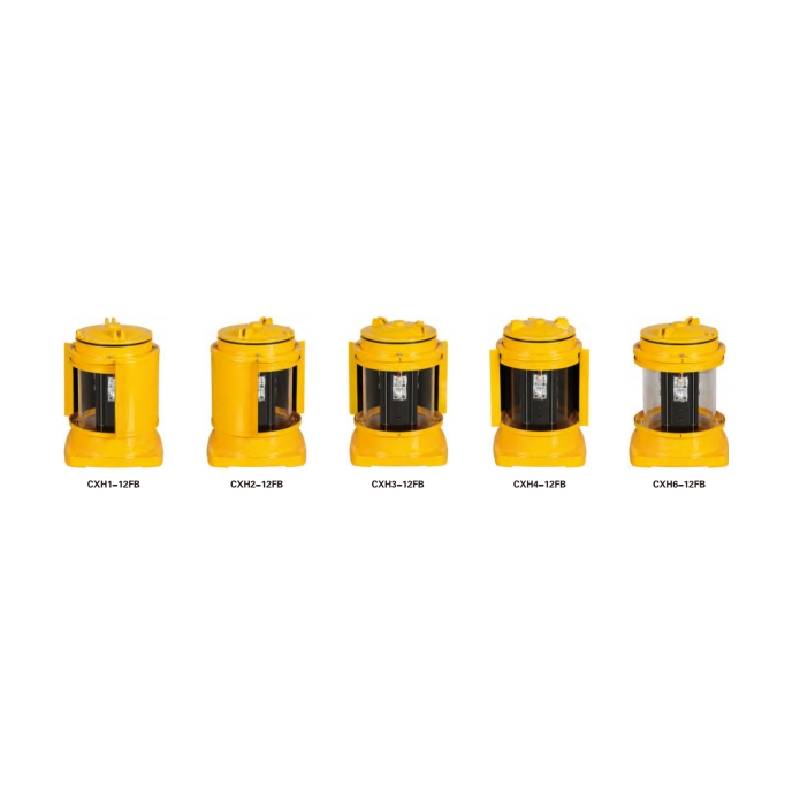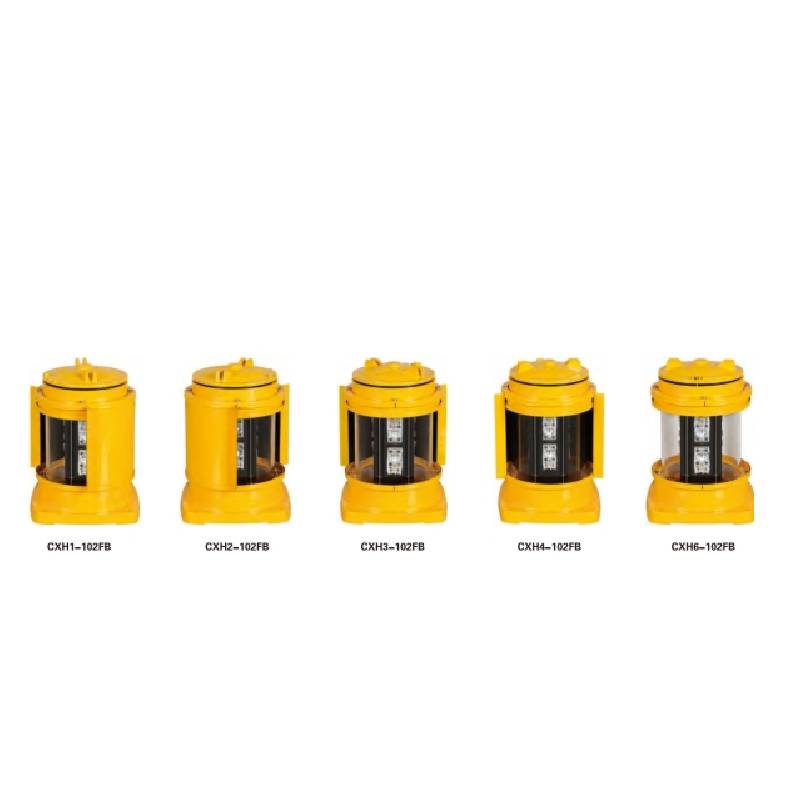Portable Explosion-proof Lights for Marine Maintenance Work
Portable explosion-proof lights are insignificant pieces of kit that can have a great impact on safety and effectiveness on ships, offshore platforms, and in marine terminals. When maintenance crews work with restricted spaces, fuel vapors or oily decks, the wrong lighting could turn a routine job into a catastrophe. This article focuses on why portable explosion-proof lighting is important in maritime settings, its important features, applications, safety standards, selection tips and future trends.
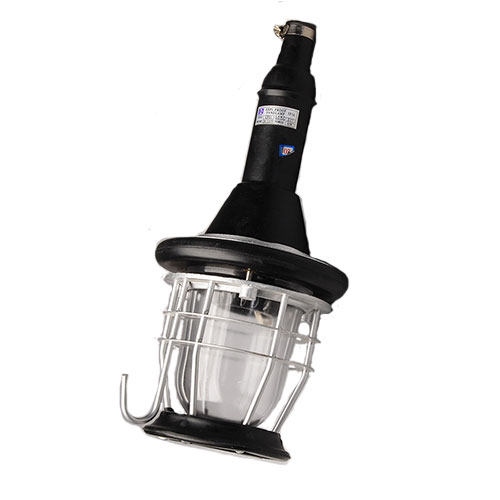
Table of Contents
Why Use Portable Explosion-Proof Lights in Marine Maintenance
Enhancing Safety in Hazardous Environments
Maintenance work in the marine sector usually is carried out in areas that contain gas, vapors, or even fine combustible particles could be found, including tanks for fuel storage or engine rooms. They can also be areas for chemical processing. Explosion-proof lighting for portables is specifically created to prevent sparks and excessive heat from sparking these gases. Their sealed housings and fireproof components ensure that, even when an internal problem occurs the ignition will be contained within the light, dramatically lessening the danger of burning or explosion.
Meeting Compliance and Regulatory Standards
International maritime safety standards and hazardous-area standards like ATEX, IECEx, or UL/CSA need certified equipment for designated zones. Utilizing portable lights that have these certifications guarantees compliance, minimizes the risk of legal sanctions and is a good choice for inspections by ports authorities or classification societies.
Durability in Harsh Marine Conditions
The marine environment is unforgiving–exposure to salt spray, high humidity, and mechanical shocks can quickly degrade standard lighting equipment. Portable lights that are explosion-proof are constructed with corrosion-resistant components like stainless steel and anodized aluminum or reinforced polymers. They have high IP ratings to guard against dust and water ingress. Their durability lets them endure the requirements of offshore and shipboard maintenance.
Versatility for Various Maintenance Tasks
From checking ballast tanks for leaks to fixing machines in cramped places, portable lights that are explosion-proof give precise light where the fixed lighting isn’t able to reach. The portability of these lights lets workers transfer them quickly from one area to another, utilize them with a hand or place them on helmets or fix them to areas with magnetic bases – increasing the efficiency and visibility during repairs.
Supporting Emergency and Night Operations
Maintenance on marine vessels isn’t always planned out emergency situations can strike anytime. Portable emergency explosion-proof light is ideal to repair power failures, or even critical inspections in areas of danger that provide immediate and safe illumination without the need to connect cables or set up temporary fixtures.
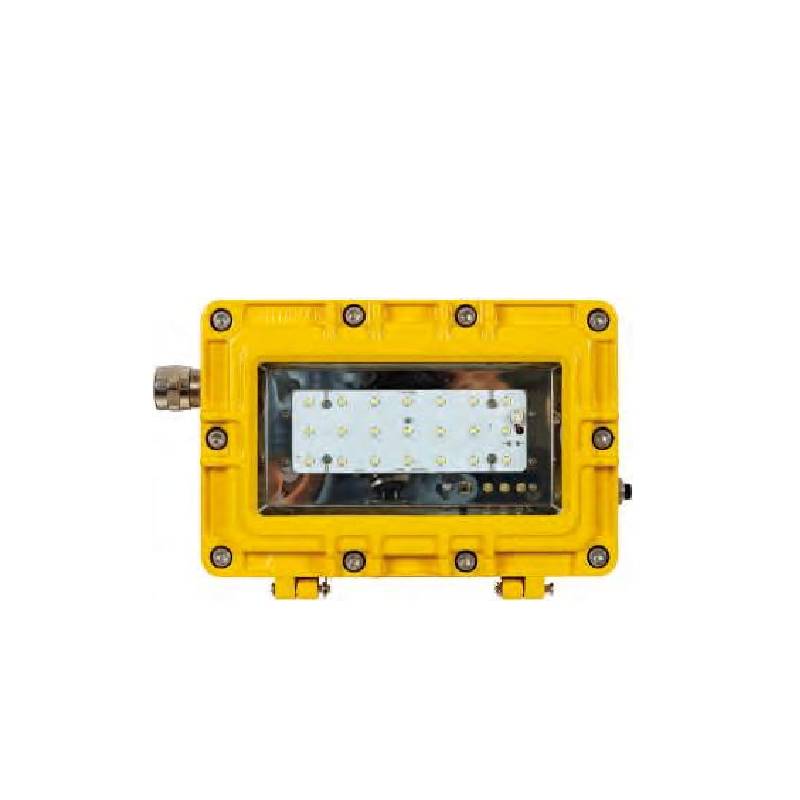
Key Design Features of Portable Explosion-Proof Lights for Marine Maintenance
1. Certified Explosion Protection
The core of marine explosion-proof lights is their capacity to function safely in dangerous environments, without igniting gas, vapors, or dust. To be used for marine maintenance, light sources require a valid certification and must be in that they are in compliance with the zones of hazardous areas in the areas they are utilized. These certifications prove that the lighting’s design is able to contain any internal ignitions and keep it out of the atmosphere around it.
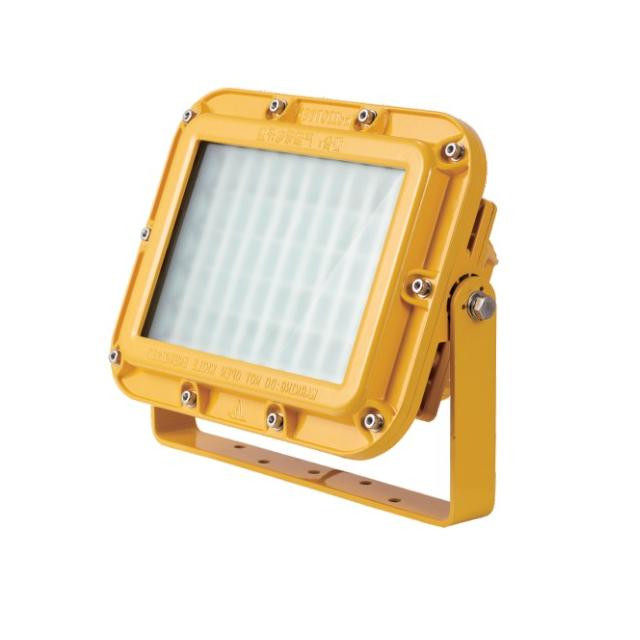
2. Rugged and Corrosion-Resistant Construction
The harsh marine conditions expose the equipment to saltwater vapors as well as high humidity and frequent temperature fluctuations All of which could damage or corrode material over the course of time. Lights that are portable and explosion-proof are usually made of stainless steel that is marine grade Anodized aluminum, anodized aluminum, or reinforced polymer to ward off corrosion. Additional treatments on the surface such as UV resistance and resistant housings to impact extend their life span in harsh environments.
3. High Ingress Protection Ratings
A good IP (Ingress Protection) rating is essential to prevent dust, water and other particles from getting into the housing of the explosion-proof light. For marine maintenance, an IP66 or higher is suggested with IP67 or IP68 offering additional protection against the possibility of temporary immersion. These ratings assure security during deck work and inspections in confined spaces and maintenance work in moist or spray-prone zones.
4. Advanced LED Illumination
Modern portable explosion-proof lights utilize high-efficiency LED technology that provides an even, bright lighting while using only a small amount of energy. LEDs produce less heat than conventional bulbs, which decreases the risk of thermal hazards in areas of high risk. LED explosion-proof lighting also provide longer service life, lower maintenance requirements, and superior performance in damp or cold conditions.

5. Long Battery Life and Safe Charging
A reliable power source is vital to ensure uninterrupted operation in dangerous zones. A lot of explosion-proof lighting systems incorporate high-capacity, safe lithium-ion batteries or replacement cells. Battery management systems stop overcharging and overheating. Likewise, secure charging protocols ensure that recharging takes place in safe places. Certain models include indicator indicators of battery status that aid in planning charge cycles efficiently.
6. Impact Resistance and Mechanical Strength
Marine maintenance typically involves working in tight spaces, where equipment and tools can be knocked down or tossed around. Explosion-proof lighting is constructed with a high level of impact resistance, usually having an IK08 rating or better, which ensures they are in use even after accidental collisions. Protective lenses that are reinforced and reinforced are an added layer of protection.
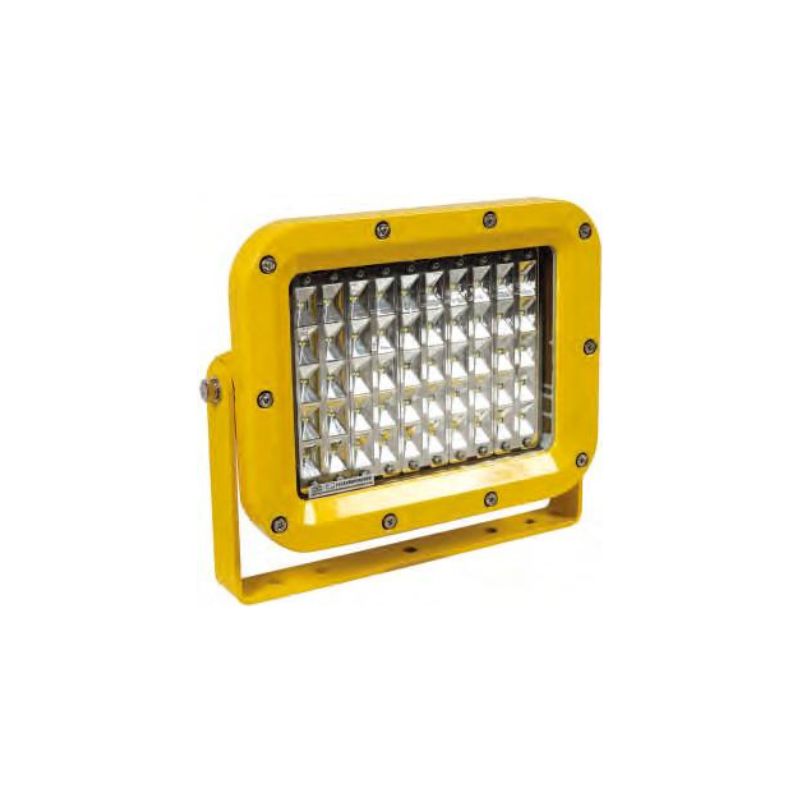
Typical Use Cases of Portable Explosion-Proof Lights for Marine Maintenance Work
| Use Case | Description | Key Safety Considerations | Example Scenarios |
| Tank and Void Inspections | The lighting of confined spaces like ballast tanks, fuel tanks, or empty spaces where flammable gases could be present. | Verify that the light is approved for the zone classification. Also, check the batteries prior to entry. | Checking for leaks, corrosion or structural damages inside an ballast tank. |
| Engine Room and Machinery Space Maintenance | Illuminating areas that could have potential oil mist, fuel or gas leaks during the course of maintenance and repairs. | Beware of charging in dangerous areas Keep seals in place to keep moisture out. | Reparing or replacing fuel injectors. oil filters inside the engine area. |
| Deck Repairs During Bunkering or Cargo Operations | Deck areas that are lit up when fuel or cargo that is flammable are transported at night and during low-visibility conditions. | Make sure to use lights that have high IP ratings to withstand sprays. Position well to stop drop. | Welding supports pipelines during bunkering operations. |
| Confined Space Entry Work | Safe lighting even in enclosed, small spaces where ventilation is not as good and dangerous gases may build up. | Make sure to test the atmosphere prior to entering to ensure constant monitoring. | Inspecting the pump rooms and the bilge compartments. |
| Emergency Response and Salvage Operations | Provides instant, safe lighting during emergency situations at night or in hazardous areas for rescue tasks. | Keep backup units ready; train crew for quick deployment. | Monitoring leak containment at late at night following a collision, or grounding. |
| Routine Safety Inspections | Illuminating areas are a part of routine maintenance checks however, they may also have dangerous environments. | Always confirm the light’s operation before using. | Verifying the integrity of valves in storage rooms for chemicals. |

Area Classification & Certification of Portable Explosion-Proof Lights or Marine Maintenance
| Classification System | Zone/Class Definition | Typical Marine Hazard Examples | Required Light Certification |
| IECEx / ATEX – Zone 0 | An area in which explosive air is present all the time or over long durations. | Inside the fuel tanks during the inspection process, there are ballast tanks contain remaining hydrocarbons. | Lights for portable that are certified for use in Zone 0 (Ex IA) for use in continuous, safe usage. |
| IECEx / ATEX – Zone 1 | A place where explosive atmospheres are likely to develop during normal operations at times. | Engine rooms during maintenance of the fuel system and pump room on tankers. | Portable light that is certified to provide Zone 1 (Ex Ib or Ex D) security. |
| IECEx / ATEX – Zone 2 | A zone that has an explosive atmosphere unlikely to develop during normal operation If it does occur, it’s only for a brief period. | Deck areas that are near fuel transfer points and areas for handling cargo. | Portable light that is certified suitable for use in zone 2 with protection Ex suitable for hazards of short duration. |
| NEC / UL – Class I, Division 1 | The locations where the flammable gases and vapors are present in regular operating conditions. | Storage areas for chemicals Active engine maintenance areas. | Class I UL-listed UL portable light that is explosion-proof. |
| NEC / UL – Class I, Division 2 | The locations where flammable gasses or vapors aren’t normally present, but can occur under certain conditions. | Deck machinery can be displaced during leaks or malfunctions. | UL-listed Class I, Division 2 portable, explosion-proof light. |
| Ingress Protection (IP) Rating | Protection against water and dust ingress essential for marine environments. | Any location for marine maintenance that is which is subject to humidity, spray or submersion. | IP66 or greater; IP67/IP68 for short-term resistance to immersion. |

Key Considerations for Choosing the Right Portable Explosion-Proof Lights for Marine Maintenance
The choice of the ideal portable explosion proof lights to perform marine maintenance work is an important decision which directly affects safety, efficiency and regulatory compliance.
1. Understanding Hazardous-Area Classification
Marine maintenance areas differ widely in terms of the degree of danger from explosives. Certain spaces, such as storage tanks for fuel or chemical compartments, can be filled with explosive atmospheres that are continuously flammable for long periods of time. Other areas, such as engines rooms or cargo areas on decks, could just occasionally be exposed harmful gasses. It is essential to know the type of work zone usually specified by safety standards. Then, select a lighting device with a certification that reflects the class. Utilizing lighting that has been approved for the wrong area is a risk of safety and violations of regulations.
2. Verifying Certification and Authenticity
Not all lights that are explosion-proof on the market comply with internationally accepted safety standards. If you are considering a lighting ensure whether it is certified from reliable organizations. Check the documentation of the manufacturer and certification numbers with care. A valid certification assures that the lighting’s design has been subjected to rigorous tests to eliminate ignition sources and is safe to use in dangerous environments, thereby reducing the chance of injuries.
3. Durability and Corrosion Resistance for Marine Conditions
Marine environments are particularly damaging to equipment because of salt spray, moisture and temperature variations. Lights that are portable and explosion-proof must be constructed from non-corrosive materials like marine-grade stainless steel or anodized aluminium or polymers that are durable and have UV resistance. Furthermore, the light should be equipped with a strong level of protection against ingress (ideally IP66 or greater) to keep dust, water spray or even a brief immersion from damaging the internal components. A well-sealed and durable light will guarantee longevity and lower the expense of replacing it.
4. Light Output and Beam Flexibility
Achieving a good lighting system is essential to ensuring safety and efficiency in maintenance. Modern explosion-proof lights typically use LED technology, which provides constant, bright light and less energy and heat consumption. Flexible beam patterns like floodlights that provide broad-area illumination, and spotlights for more precise inspections, enhance the flexibility. Selecting a light that has different brightness settings can aid in adapting to different needs and extend the life of batteries.
5. Portability and Mounting Options
Marine maintenance usually requires flexibility in lighting. Portable explosion-proof lights should be light and ergonomically designed to allow for hands-free usage. In addition, various options for mounting for explosion-proof lighting, such as hooks, bases with magnetics, helmet clips and tripods allow hands-free use, which is crucial when technicians require hands-free to work in tight or difficult areas. The ability to place the light in a secure manner improves security and the quality of work.
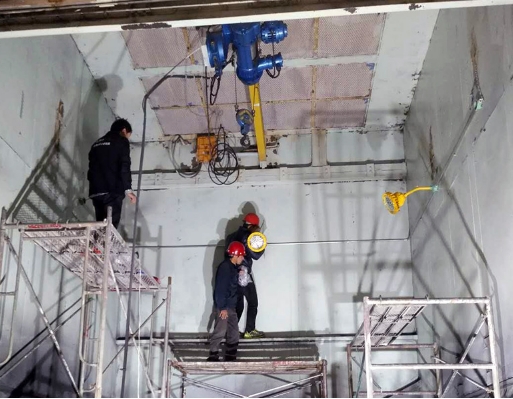
6. Mechanical Strength and Impact Resistance
Maintenance on offshore and shipboard vessels can be physically challenging and uncertain. Lights must withstand the impact of knocks, drops, and vibrations with no loss of the functionality. Highly resistant to impact (such like IK08 and greater) and reinforced protection features shield the light from harm during normal handling and accidental hits, ensuring it’s operational when you need it most.
7. User-Friendly Controls and Indicators
In marine environments that are hazardous Operators may be working in stress while wearing gloves or juggling multiple tasks at once. Explosion-proof lights must have huge, comfortable switches as well as easy-to-use controls that minimize the chance of making mistakes. Inbuilt indicators for battery status and operational mode offer vital information in a glance, increasing safety and operational understanding.
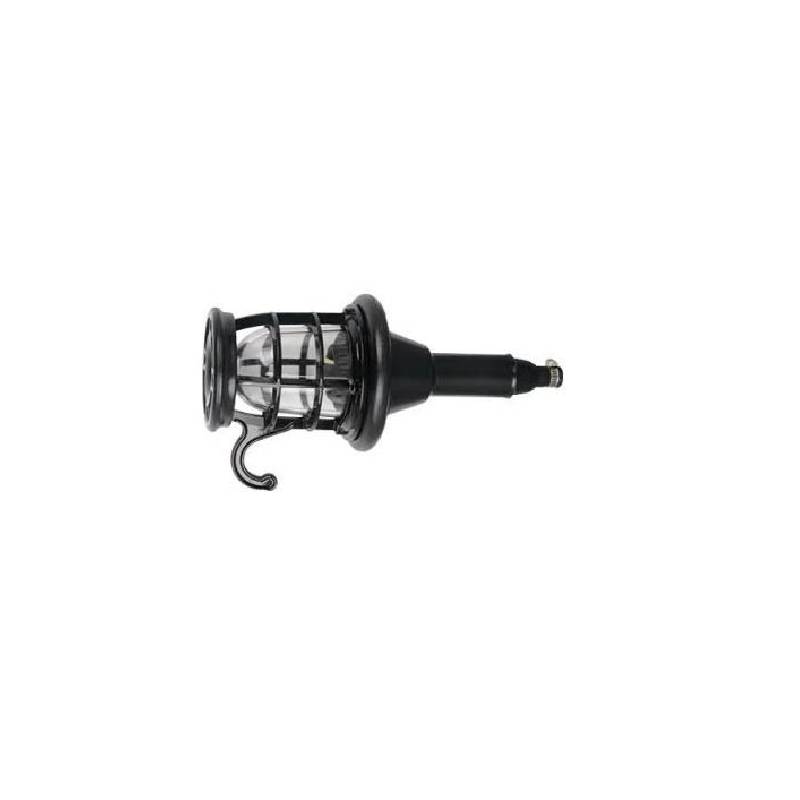
Future Trends and Innovations in Portable Explosion-Proof Lights
As safety standards get more strict and operational challenges become more complicated, manufacturers are innovating to deliver portable explosion-proof lights not only safer but also smarter, more versatile, and easier to use.
1. Smart Battery Management and Real-Time Monitoring
One of the most significant developments in the field of explosion-proof lighting technology involves the incorporation of intelligent batteries management system. They provide real-time information about battery condition, runtime remaining, and charging status via display onboard or via wireless. This new technology allows maintenance personnel to plan their tasks more efficiently, prevent unexpected power outages, and prolong the lifespan of batteries by optimizing the charging cycle. Remote monitoring can notify supervisors of equipment that requires attention, which can reduce downtime while increasing security.
2. Modular and Customizable Designs
Future portable lights that are explosion-proof are evolving towards modularity that allows users to switch out components like batteries, LED heads as well as mounting components. This modular design offers more flexibility, as it allows users to customize the light for specific purposes without having to carry multiple components. It also makes repair and upgrade, since the individual modules can be upgraded or upgraded instead of repurposing the entire unit, which results in savings on costs and less waste to the environment.
3. Advanced Materials for Harsh Marine Environments
Maintenance on marine equipment requires lighting that is able to withstand salt water that is corrosive as well as extreme temperatures and exposure to harmful gases like hydrogen sulfur. The latest advances in material science are producing high-performance polymers, corrosion-resistant alloys and enhanced coatings that dramatically increase the longevity and durability of the explosion-proof lights. These materials ensure their structural integrity and performance in the harshest conditions, which makes the lights better suited for subsea and offshore use.
4. Integration of Communication Technologies
Combining the power of lighting with communication is a new trend that improves safety and efficiency in operations. Future explosion-proof lights could include wireless radios Bluetooth as well as mesh network, allowing workers to remain connected, while minimising the amount of devices they use. These multi-functional devices simplify processes during complicated maintenance or emergency situations that allow simultaneous illumination and communication, without the safety aspect being compromised.
5. Adaptive and Intelligent Lighting Controls
Sensor technology advancements enable portable, explosion-proof lights to automatically alter the brightness, beam focus and color temperature in response to the conditions of the environment or on the requirements of the task. Adaptive lighting helps reduce eye strain and enhances the visibility of various conditions, and saves energy by delivering light precisely when and where it is required. Intelligent controls can also incorporate customizable modes that are tailored to specific maintenance needs which improve the security and user experience.
6. Wireless Charging and Energy Harvesting Solutions
Traditional charging methods could be a problem in areas with high risk because of the safety issues around exposed connectors. Wireless charging stations specifically designed to protect against explosions are becoming more popular, providing a safer and more efficient method of charging batteries without direct contact with. Furthermore, the newest technology for energy harvesting, such as the conversion of the vibrations of the environment or temperature differentials into electrical energy–can be used to extend battery life while less reliance on other power sources.
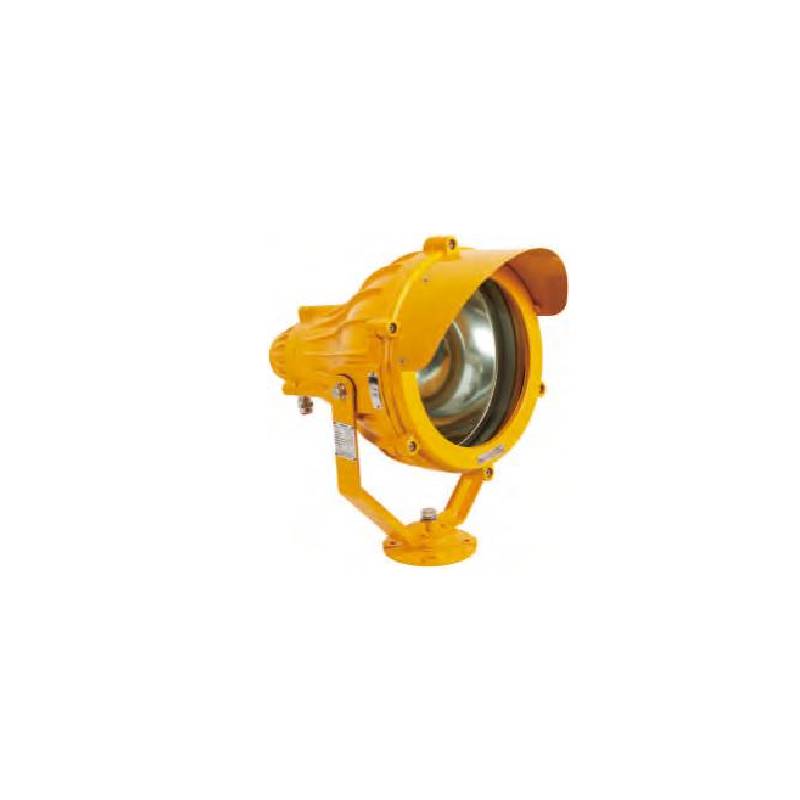
Summary
Portable explosion-proof lights provide a frontline safety measure in marine maintenance work. By combining robust construction, certified explosion protection, and ergonomic portability, they enable crews to work confidently and efficiently in even the most dangerous conditions at sea.
